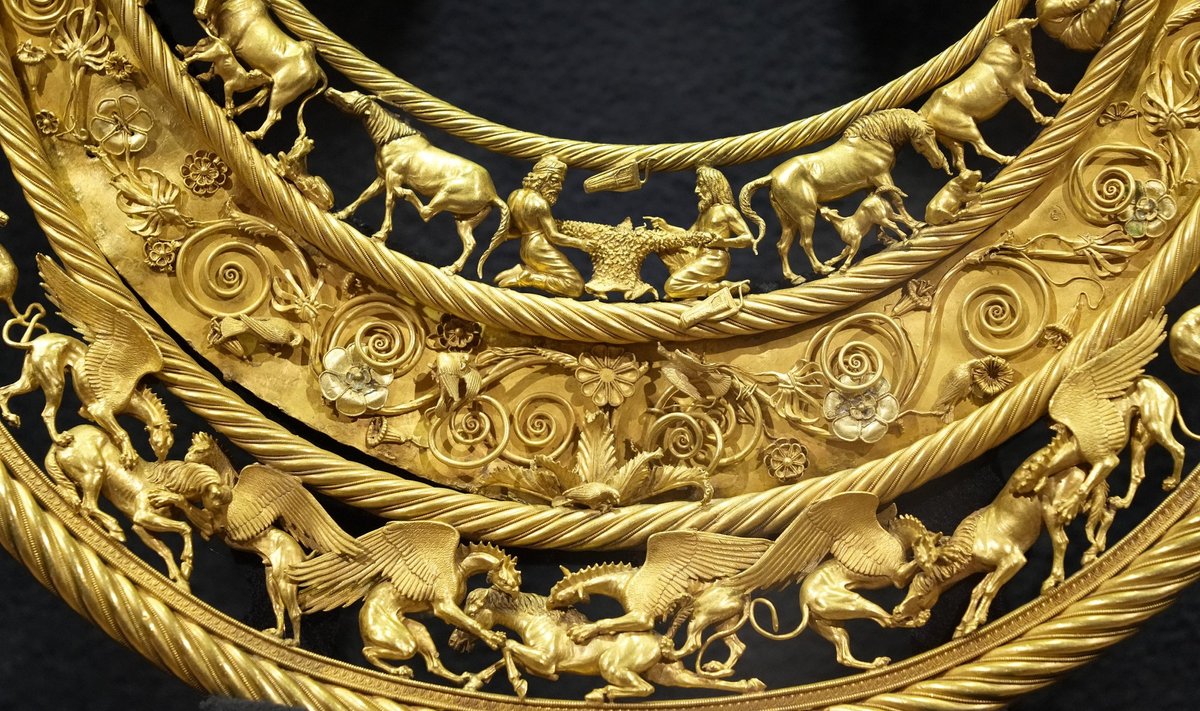The Ministry of Culture and Information Policy of Ukraine and the Allard Pearson Museum – Archaeological Museum of the University of Amsterdam agreed on the return of museum objects to the state part of the Museum Fund of Ukraine from four Crimean museum institutions.
The corresponding document was signed by the Acting Minister of Culture and Information Policy Rostislav Karandeev and the Acting Director of the University Library of the University of Amsterdam, Dr. Fred Armen.
Museum items include the collections of the Crimean institutions “Central Museum of Taurida”, “Kerch Historical and Cultural Reserve”, “Bakhchisarai Historical and Cultural Reserve” and the National Reserve “Taurid Chersonese”.
⚡️Scythian Gold will return from the Netherlands to #Ukraine after 9 years, according to Ukraine’s Ministry of Culture.
The collection of 565 museum exhibits was brought for the exhibition “Crimea – the Golden Island in the Black Sea” to the Netherlands in February 2014, even… pic.twitter.com/drlqd8yNzt
— KyivPost (@KyivPost) November 22, 2023
Karandeev thanked the Allard Pearson Museum for storing the collections for 9 years, as well as the decision of the Dutch side not to charge costs for storing museum exhibits.
“The return of artifacts of special historical and cultural significance is a significant and multifaceted process. It combines legal, museum, diplomatic, and logistical aspects. We look forward to the return of the collections, one of which is known as “Scythian gold,” home to Ukraine,” Karandeev noted.
⚡️The Ministry of Culture agreed with the #Netherlands on the conditions for the return of “Scythian gold” to #Ukraine
These exhibits were stuck in the Netherlands in 2014 – they were taken out of #Crimea before the occupation, and for the next 9 years #ruZZia and #Ukraine pic.twitter.com/GufcDJzDCC
— Aurora Borealis 🤫 (@aborealis940) November 22, 2023
What came before?
“Scythian Gold” is a collection of 565 museum exhibits that were brought to the exhibition “Crimea – a golden island in the Black Sea” in Amsterdam from four museums in Crimea even before the occupation of the peninsula by Russia.
In June 2023, after almost 10 years of litigation, the Supreme Court of the Netherlands completely rejected the cassation appeal of the Crimean museums and upheld the appeal decision, which satisfied the claims of Ukraine.
The court, in particular, ordered the Allard Pearson Museum to transfer the collection of “Scythian gold” from Crimean museums to the National Museum of the History of Ukraine.
After this, Ukraine discussed with the Netherlands the free return of “Scythian gold”. Ukraine had to pay the Amsterdam Museum to store the collection for almost 10 years.

